Over the last six months, an increasing number of athletes have posted photos and videos from their training sessions that include a small circular pod attached to the back of their arms, near the triceps. As it turns out, the pod is a continuous glucose monitor (CGM), specifically the Abbott Libre Sense Glucose Sport Biosensor which partnered with a new company, Supersapiens, to design an interface that allows athletes to monitor and optimize their blood glucose levels throughout the day. Essentially, the device collects real-time information about the concentration of glucose in the bloodstream, and transmits this data via Bluetooth to an app on the user’s cell phone.
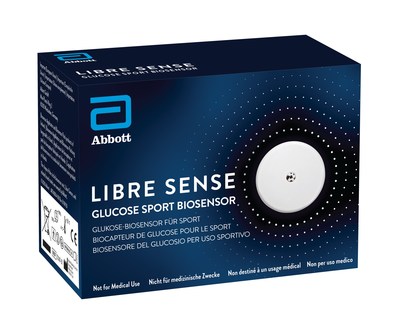
Taking a step back, here’s a condensed version of the complex physiological process that is energy metabolism surrounding exercise: Carbohydrates are the body’s primary source of energy during exercise. When carbohydrates are consumed, the body breaks them down through digestive processes into simple sugars, which are then converted into circulating blood glucose. The more complex the carbohydrate, the longer it takes for the body to break it down into its smaller building blocks.
At rest, the body stores chains of glucose in the form of glycogen, primarily in the skeletal muscle and liver, to be called upon during exercise. Through aerobic and anaerobic processes, the body converts glucose into cellular energy in the form of adenosine triphosphate (ATP), which allows muscle cells to contract and thus power the activity. However, the amount of stored muscle glycogen is finite and depends on the volume of skeletal muscle on an athlete’s body. As muscle glycogen becomes depleted, blood glucose begins to drop, and the athlete quickly trends toward the fearsome “bonk”.
Therefore, an athlete should supplement with carbohydrate sources — the simpler the better — during training sessions or races longer than 60-90 minutes to enable the body to maintain sufficient blood glucose levels and thereby keep their muscles fueled throughout the session.
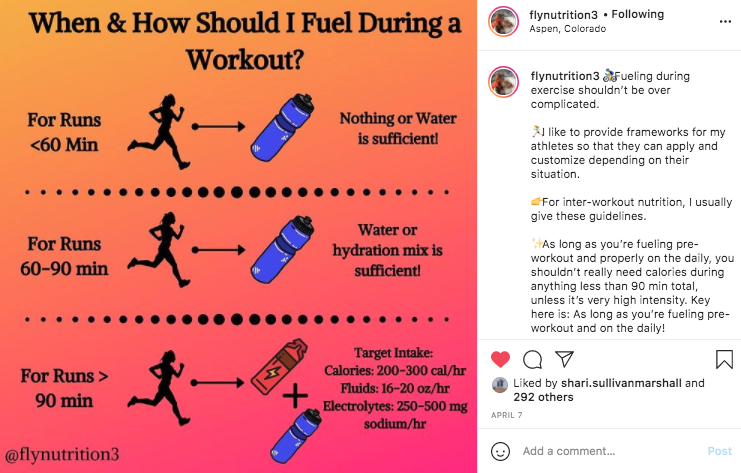
After the activity is completed, the hormone insulin helps draw glucose out of the blood stream to replenish muscle glycogen stores. Readers may be familiar with the 30-60 minute window of opportunity after exercise during which the body is more sensitive to insulin and therefore can replace the depleted muscle glycogen more rapidly by taking in a post-workout snack containing carbohydrates.
There’s a lot more to this, but for the purpose of this article, here’s a key takeaway from “Fundamentals of glycogen metabolism for coaches and athletes”, posted in an April, 2018 issue of the journal Nutrition Reviews:
“It is now widely accepted that consuming a diet sufficient in carbohydrates, along with ingesting carbohydrates during and following exercise, can improve performance and speed recovery… It is also well established that beginning exercise with ample muscle glycogen stores is an important contributor to improved exercise performance; further, restoration of glycogen stores is essential for complete recovery and the maintenance of subsequent exercise capacity.”
Bringing it back to continuous glucose monitoring: By monitoring blood sugar and striving to keep it within an optimal range, athletes can become more informed about their body’s response to nutrition and training in order to dial in performance fueling, stabilize energy levels, and promote faster recovery. Peaks and valleys can promote inflammation and impair recovery and sleep, so stability is your friend.
The Supersapiens CGM technology is not yet commercially available in the US, though they are already available in the U.K. and Europe. As such, Supersapiens — a direct-to-consumer American based company — is holding off on media interaction until the products can reach their target user base. FasterSkier will follow up with representatives to learn more about the product itself as this changes.
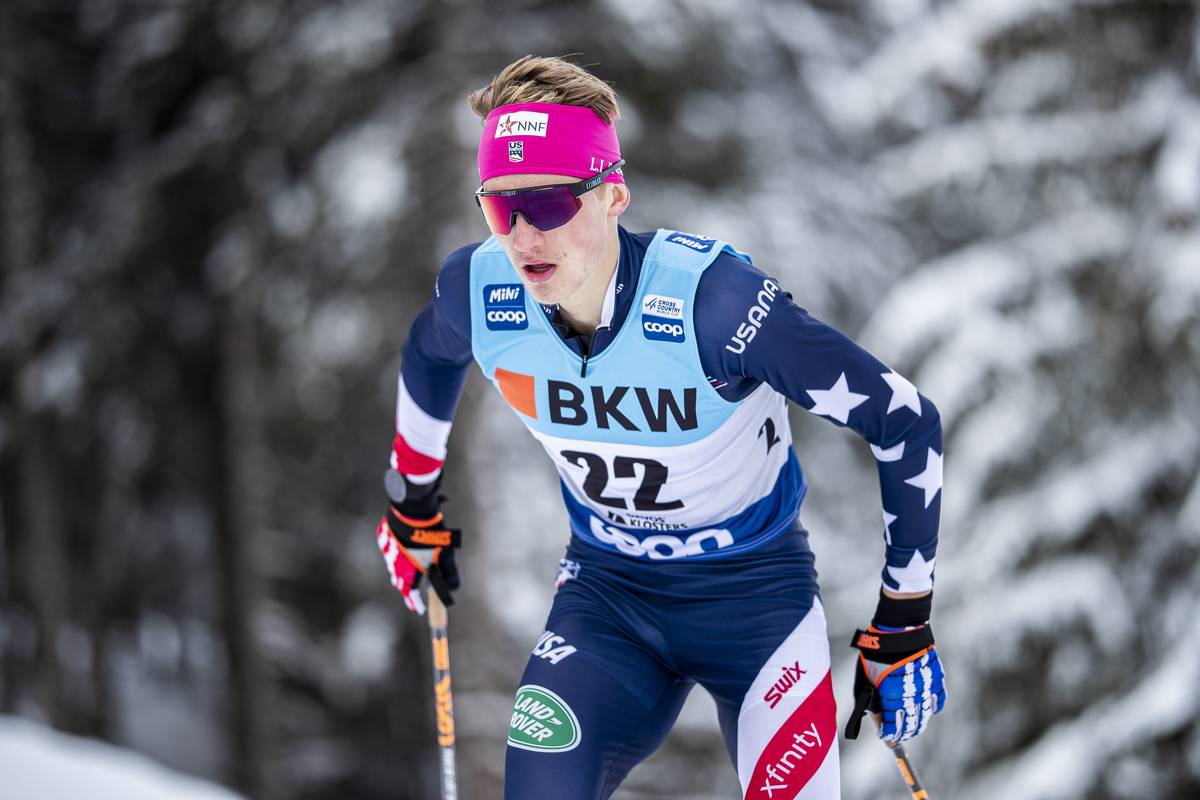
However, among the American athletes taking part in an observational wear trial is Gus Schumacher, with whom FasterSkier connected to learn more about how he has used the CGM thus far and what he has learned in the process. At the time of the call on August 9th, the 21-year-old Junior World Champion was in the throes of high-volume summer training in Anchorage, AK, with a handful of “the boys”, i.e., fellow top U-23 athletes Noel Keeffe, JC Schoonmaker, Johnny Hagenbuch, Sam Hendry, and more.
Schumacher started working with Supersapiens, alongside a dietitian from the U.S. Ski Team, to incorporate the CGM into his training in late May during the team’s on-snow camp in Bend, OR.
“At first, the biggest benefit was that I did research about fueling and [nutrition] through the resources with the U.S. Ski Team,” Schumacher explained. “And that just taught me a lot more about how I should be fueling during training and after training. So stuff that I sort of knew, but didn’t really focus that much on previously.”
While some of the concepts may not seem particularly novel to those versed in nutritional practices for athletes, Schumacher explained that watching his glucose levels helped him understand the importance of fueling surrounding his training sessions and ensuring that overall, he was consuming enough food to meet the high demands he places on his body.
“Now, I use it more for the recovery side of things, like making sure my overnight glucose levels don’t drop too low,” Schumacher said. “I mean, part of it is — I can tell when I’m under -fueled, like if I get hungry in the morning or something. But [using the CGM] is kind of a nice way to double check, because it’s hard to always trust your [hunger] cues when you’re when you have to eat a lot more than normal for big training days and adjust [how much you eat] to each training day. So you can be a little more secure about whether you’re eating enough.”

The biggest change Schumacher has made has been in his fueling surrounding training sessions. He explained that he used to rely primarily on large meals between sessions with little fuel during the session, leaving him depleted and feeling like he needed to “bomb” himself with food at lunch and dinner. He also typically carried plain water for hydration the majority of the time, incorporating sports drink for the electrolytes only when it was hot. After seeing the spikes and drops on his blood sugar and learning from dietitians, he now spreads his intake out throughout the day for more stable energy.
“Now, I’m eating more snacks and keeping the meals like a more normal size. So — finishing [a session], having a protein heavy snack and then eating a meal within an hour, and then having a balanced snack before the next training session. And making sure to just take in carbs during that session, so I always have sports drink now and I usually also have some bars or fruit or gummies during training sessions. That’s the biggest thing I learned — even during easy sessions, you can oxidize up to 60 grams of carbs an hour roughly something like that. That’s the goal that I shoot for.”
So is it making a difference?
“Yeah, actually — especially on my high volume weeks. I noticed that it just seemed easier to get out the door as those sessions built up. Like, I still would eat a big lunch and stuff, but it didn’t seem like I was, like, fully come back from depleted after every session. I would finish and not feel super hungry. It just seemed a little quicker to come back to normal.”
While his U.S. Ski Team dietitian provided the guidance on the types of foods he should incorporate and nutrient timing, the team at Supersapiens helped him understand the data he was collecting with the CGM. Specifically, they helped him through the learning curve of understanding normal and optimal blood glucose levels for different types of sessions.
“I would ask stuff like, ‘Why does my glucose not get that high during this session?’ Because all the information on their website shows, ‘You, will you want to figure out what’s good for your performance.’”
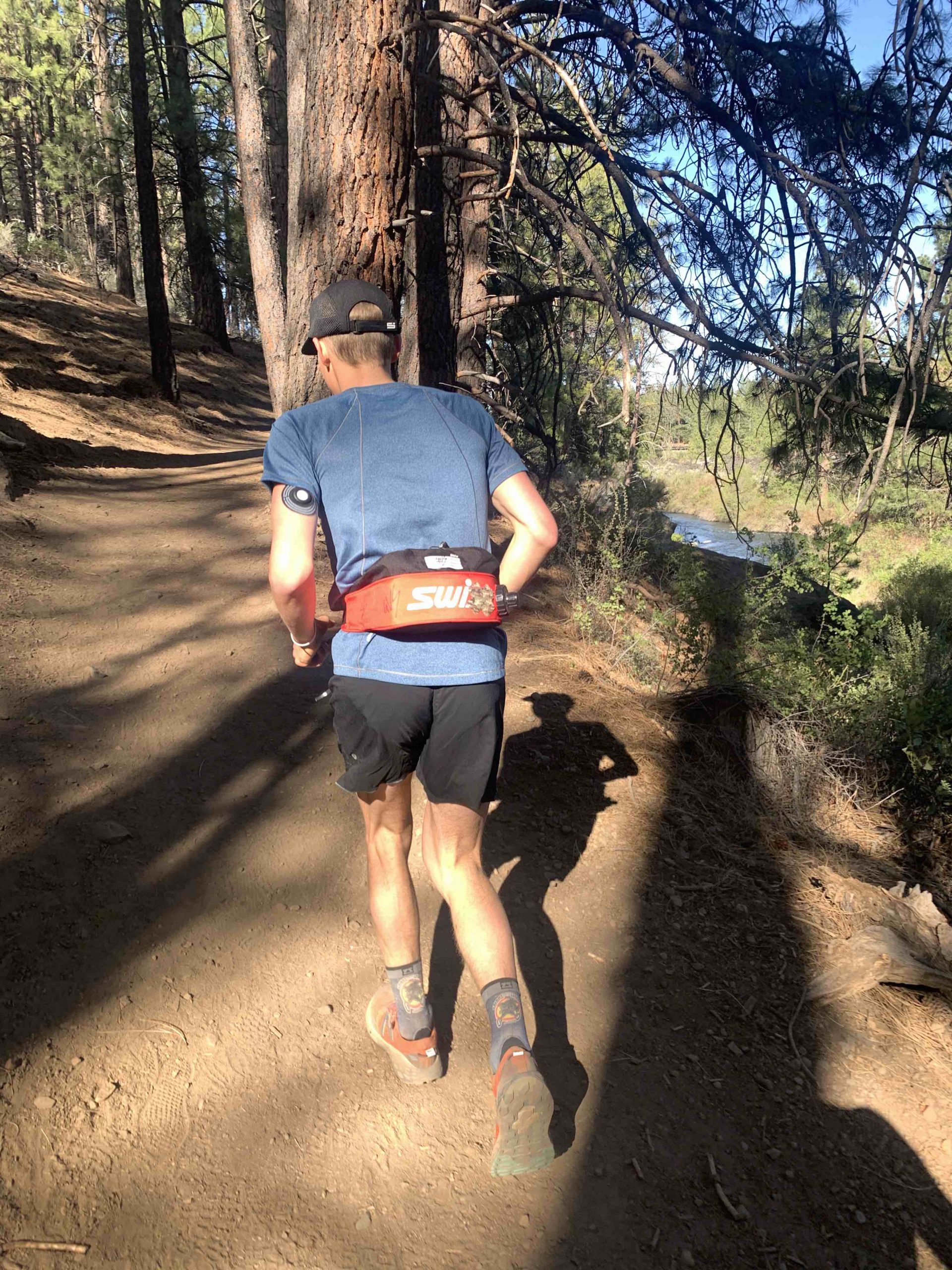
While he was seeing in the Supersapiens information that higher blood glucose levels were important for intensity sessions, he was noticing that his levels would be on the low side during easy distance sessions.
“I asked them about that, and for that particular instance, when you’re going easy, you’re not necessarily oxidizing a ton of glucose [and your body can rely more on breaking down its fat stores], so blood glucose can stay pretty low.”
He also started to consider his overnight blood sugar levels to ensure he was recovering well while sleeping.
“[They recommended] experimenting with having a snack with a decent amount of protein and fat before bed to see if that stabilizes overnight glucose.”
Improving fueling and keeping blood sugar is all well and good. But, we live in a world where diet culture is rampant and the emphasis on power-to-weight ratio in endurance sports can cause athletes to develop disordered eating habits and an unhealthy body image. Skiers are already typically hooked up to a heart rate monitor and a GPS watch to collect a plethora of training data. At what point does it become too much or lead an athlete to be overly meticulous about their diet at the expense of their mental health?
In terms of data overall, Schumacher explained he finds it interesting, and his coaches are “super into data”, but he is able to hold it lightly and not read too much into it.
“I think at this point, I’m still very open to trying anything — any new data collection is kind of cool… So I kind of embrace it, and if it ever feels like too much, I’m pretty good about going back to my instincts. I feel like I can fall back on that intuition pretty easily.”

Schumacher felt similarly about monitoring his blood glucose. He has gained more awareness about the foods that he consumes and how they impact his blood sugar, but he explained when pitched the question of whether he could see the use of GCM technology leading him to place an unhealthy emphasis on eating specifically to stay within a particular range that ultimately, he knows to trust his body.
“I think that’s a good point, because sometimes when I eat something that I think is pretty good, like a balanced meal, and [my blood sugar] spikes really hard, the knee jerk is to be like, ‘What’s going on? Why did that happen? How do I fix that?’ But, more and more as I’ve had [the CGM] on, it’s just like, sometimes that’s just like, normal. It’s whatever. So that’s when I fall back on my intuition, like, I feel satisfied.”
To meet the energy demands of 20-30 hours of training, a pro skier needs to eat a proportionally large volume of nutrition. Endurance sports are about the long haul, and ensuring that the overall lifestyle is sustainable is essential in allowing an athlete to develop and achieve their potential. Schumacher elaborated on keeping his relationship with fueling and blood glucose in a balanced place.
“I think it’s possible that having that data around your food can make it not that fun, like if you’re really just trying to make those numbers look good. But I think it’s important to use [the data] as an overall thing. And just use it to try to make sure your resting levels are high enough, and you’re getting enough during your training, but not worrying too much about the micro things because there’s a lot that goes into that.
“Or [understanding that] you don’t need [the data] to be perfect to be fueling perfectly. And I think it’s fun for me to know more about performance fueling and be able to implement that day to day and feel like it’s making a difference and not have it be overbearing, because part of performance feeling is still eating stuff that makes you happy in general. So yeah, I think it’s important to have a pretty holistic view of all of it, but it’s also fun, I think, to have the eating be part of your training and to know that it matters for how you feel and just making sure you feel good all the time.”
As this technology becomes commercially available, athletes of all levels will need to make similar considerations in the calculus of determining whether this technology and the information if provides is worth the investment (currently around £113 in the U.K. for a one month subscription, including two pods that last 14-days each).
To provide athletes interested in CGM technology with guidance, FasterSkier connected with Registered Dietitian Kylee Van Horn. An accomplished runner herself, Van Horn helps endurance athletes across a variety of sports dial in their nutrition to support their training and overall wellbeing through her business, FlyNutrition.

Van Horn recommended a targeted approach, cautioning against the aforementioned possibility of becoming too focused on the data and potentially compromising the athlete’s mental health. She knows, perhaps too well, from her clients the propensity for under-fueling in endurance athletes of all levels.
“I think there is going to be some level of risk,” said Van Horn in a call. “The more data you have — and especially within the endurance sports world, for people to tip into the restrictive eating pattern.”
However, she expressed that using glucose monitoring to focus on key areas of nutrition could help athletes improve their overall fueling. In particular, focusing on balanced meals and snacks that provide sustained energy in and out of workouts, that also keep eating and preparing food both enjoyable and sustainable.
“I personally wouldn’t want to use it long-term with an athlete, but I think as a short-term, using it to dial in some specific things could be really beneficial… Dialing in what would be a really good pre-workout breakfast or meal option for [the athlete] that’s not going to cause a rebound hypoglycemic effect where we’ve got a big spike and drop in blood sugar and then we’re seeing this big energy spike and drop part way into the activity or race.”
Van Horn also envisions a more informed version of trial and error to maintain energy levels during workouts, particularly in longer sessions or races. This could be particularly useful with athletes who have sensitive stomachs, as spikes and drops in blood sugar could exacerbate these issues.
“The intra-workout fueling, in my opinion, would be really interesting. Because we do know that some foods do affect people differently in regards to how much they spike their blood sugar and drop it and how quickly.”
Van Horn shared that a coach and professional triathlete who she partners with, Matt Hanson, has also been a member of the pilot group. Hanson is a three-time national champion at the Ironman distance and is the current world record holder in an Ironman event (7:39:25).
Hanson shared with her that he has found a lot of value in using glucose monitoring to better understand his body’s response to his pre-workout meals, because he had been experiencing big swings in energy levels. The CGM has helped him adjust these meals to foster more stable energy. He also found value in playing with the types and timing of different sports nutrition products he was consuming during his training to maintain better glucose levels and energy throughout.
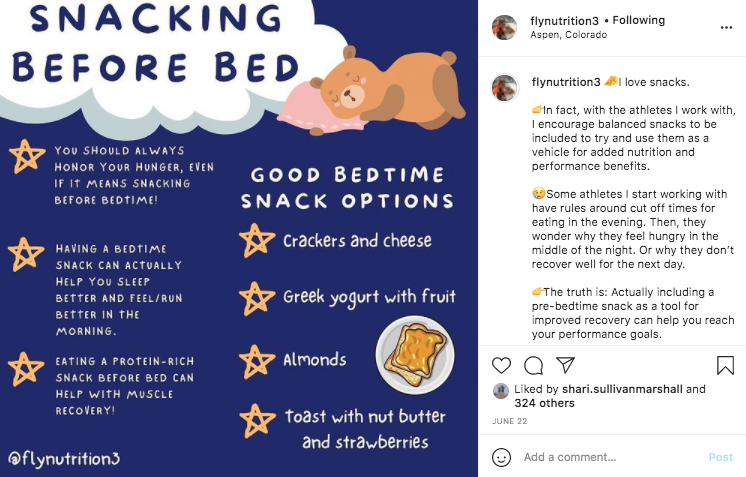
Lastly, because sleep is an essential component of an athlete’s recovery and overall health, Van Horn explained that, like Schumacher noted, a pre-bed snack that contains protein and carbohydrate can be very valuable in supporting recovery and stable blood sugar during sleep, in particular for athletes training at high volumes or early in the morning.
“If you’re eating a snack with too high of carbohydrate or eating certain foods before bed, that can impact your recovery and cause micro-awakenings, which impacts sleep quality, so that might also be something that you could address [by monitoring].”
Rachel Perkins
Rachel is an endurance sport enthusiast based in the Roaring Fork Valley of Colorado. You can find her cruising around on skinny skis, running in the mountains with her pup, or chasing her toddler (born Oct. 2018). Instagram: @bachrunner4646



